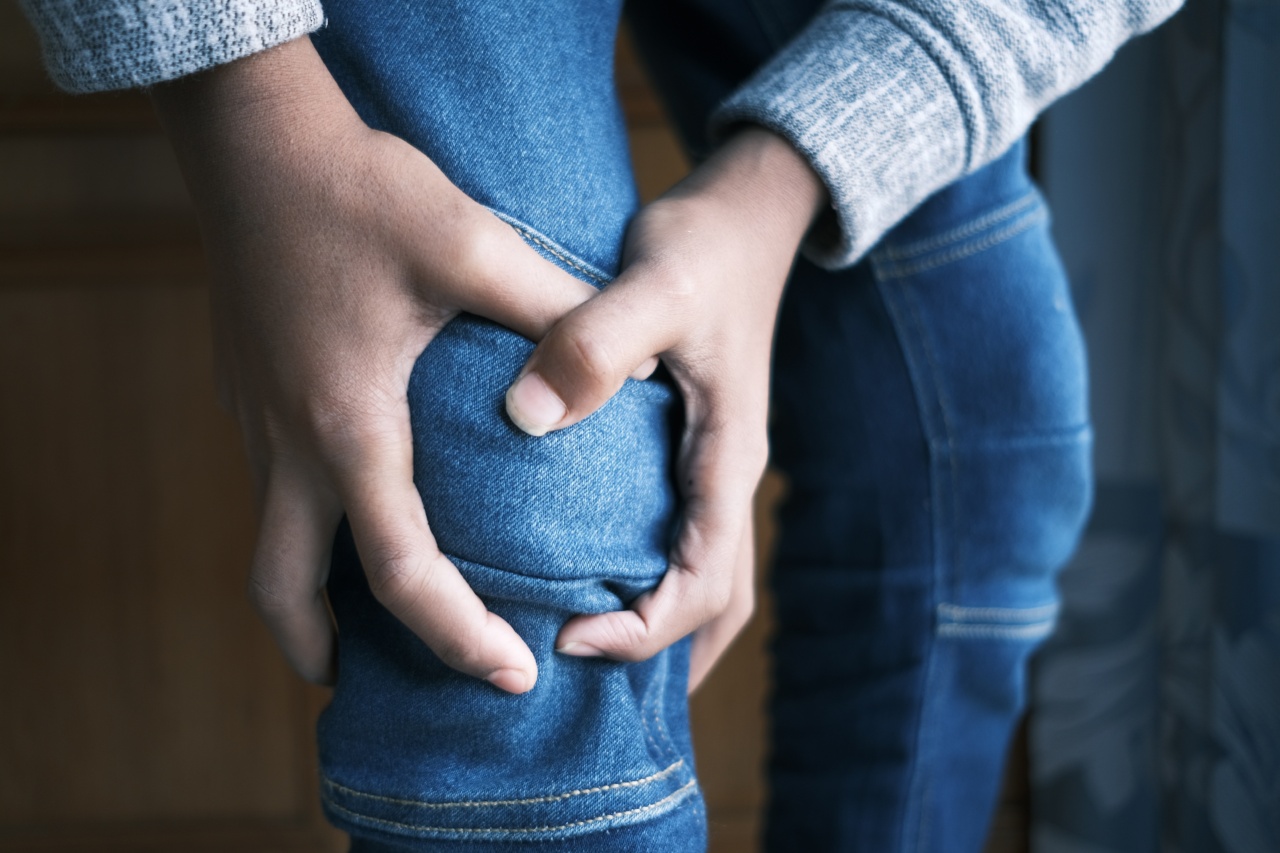Knee pain is a common type of joint pain that affects millions of people around the world. It is a debilitating condition that can limit your mobility and quality of life.
The knee joint is a complex structure that consists of bones, cartilage, ligaments, tendons, and muscles. Any damage or injury to these structures can cause knee pain. In this article, we will explore the causes and treatments of knee pain.
Causes of Knee Pain
There are many possible causes of knee pain. Some of the most common causes include:.
1. Knee Injuries
Knee injuries are a common cause of knee pain. The knee joint is vulnerable to injuries due to its complex structure and frequent use. Some of the most common knee injuries include:.
- ACL (anterior cruciate ligament) tear
- MCL (medial collateral ligament) tear
- Meniscus tear
- Tendonitis
- Bursitis
2. Osteoarthritis
Osteoarthritis is a degenerative joint disease that affects millions of people around the world. It is a chronic condition in which the cartilage in the knee joint gradually wears away, leading to bone-on-bone contact and inflammation.
Osteoarthritis is more common in older adults and can cause knee pain, stiffness, and swelling.
3. Rheumatoid Arthritis
Rheumatoid arthritis is an autoimmune disease in which the body’s immune system attacks the joints. It can cause inflammation and damage to the knee joint, leading to knee pain and stiffness.
Rheumatoid arthritis can affect people of all ages and typically affects women more than men.
4. Gout
Gout is a type of arthritis that occurs when uric acid crystals build up in the joints, including the knee joint. It can cause sudden and severe knee pain, swelling, and redness.
5. Patellofemoral Pain Syndrome
Patellofemoral Pain Syndrome is a common knee condition that affects the cartilage under the kneecap. It can cause knee pain, especially when bending or climbing stairs.
This condition is more common in young adults and people who engage in activities that involve a lot of kneeling, squatting, or jumping.
6. Tendinitis
Tendinitis is a condition that occurs when the tendons that attach the muscles to the bones in the knee joint become inflamed. It can cause knee pain and stiffness, especially when moving the knee joint.
Treatments for Knee Pain
The treatment for knee pain depends on the underlying cause of the pain. Some of the most common treatments for knee pain include:.
1. Rest and Ice
If you have a knee injury, it is essential to rest the knee and apply ice to reduce swelling and pain. Resting the knee can help prevent further damage and speed up the healing process.
2. Physical Therapy
Physical therapy is a type of treatment that involves exercises and stretches designed to improve the strength and flexibility of the knee joint. It can be beneficial for people with knee injuries, arthritis, or other knee conditions.
3. Medications
There are several medications that can help alleviate knee pain, including:.
- NSAIDs (non-steroidal anti-inflammatory drugs)
- Acetaminophen
- Corticosteroids
4. Injections
Injections can be used to relieve knee pain, especially if other treatments have not been effective. Some of the most common injections include corticosteroids, hyaluronic acid, and platelet-rich plasma (PRP).
5. Surgery
Surgery may be necessary for severe knee injuries or conditions, such as ACL tears or osteoarthritis. Some of the most common surgical procedures for knee pain include arthroscopy, knee replacement surgery, and ligament repair.
Conclusion
Knee pain is a common condition that can impact your quality of life. There are many possible causes of knee pain, including injuries, arthritis, and other conditions.
The treatment for knee pain depends on the underlying cause of the pain and can include rest, physical therapy, medications, injections, or surgery. If you experience knee pain, it is essential to seek medical attention to determine the cause and appropriate treatment plan.



























